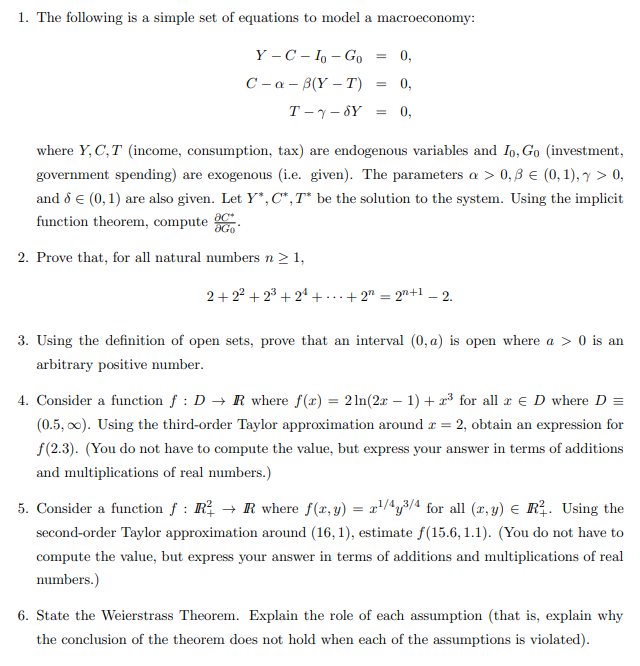Consider a function f : D → R where f(x) = 21n(2r – 1) + x³ for all æ e D where D = (0.5, 0). Using the third-order Taylor approximation around r = 2, obtain an expression for S(2.3). (You do not have to compute the value, but express your answer in terms of additions and multiplications of real numbers.)
Consider a function f : D → R where f(x) = 21n(2r – 1) + x³ for all æ e D where D = (0.5, 0). Using the third-order Taylor approximation around r = 2, obtain an expression for S(2.3). (You do not have to compute the value, but express your answer in terms of additions and multiplications of real numbers.)
Linear Algebra: A Modern Introduction
4th Edition
ISBN:9781285463247
Author:David Poole
Publisher:David Poole
Chapter6: Vector Spaces
Section6.3: Change Of Basis
Problem 17EQ
Related questions
Concept explainers
Ratios
A ratio is a comparison between two numbers of the same kind. It represents how many times one number contains another. It also represents how small or large one number is compared to the other.
Trigonometric Ratios
Trigonometric ratios give values of trigonometric functions. It always deals with triangles that have one angle measuring 90 degrees. These triangles are right-angled. We take the ratio of sides of these triangles.
Question
Please answer (4) with typefont and explain the steps.

Transcribed Image Text:Consider a function f : D → R where f(x) = 21n(2r – 1) + x³ for all æ e D where D =
(0.5, 0). Using the third-order Taylor approximation around r = 2, obtain an expression for
S(2.3). (You do not have to compute the value, but express your answer in terms of additions
and multiplications of real numbers.)
Expert Solution
This question has been solved!
Explore an expertly crafted, step-by-step solution for a thorough understanding of key concepts.
This is a popular solution!
Trending now
This is a popular solution!
Step by step
Solved in 4 steps with 11 images

Knowledge Booster
Learn more about
Need a deep-dive on the concept behind this application? Look no further. Learn more about this topic, algebra and related others by exploring similar questions and additional content below.Recommended textbooks for you

Linear Algebra: A Modern Introduction
Algebra
ISBN:
9781285463247
Author:
David Poole
Publisher:
Cengage Learning

Algebra for College Students
Algebra
ISBN:
9781285195780
Author:
Jerome E. Kaufmann, Karen L. Schwitters
Publisher:
Cengage Learning

Linear Algebra: A Modern Introduction
Algebra
ISBN:
9781285463247
Author:
David Poole
Publisher:
Cengage Learning

Algebra for College Students
Algebra
ISBN:
9781285195780
Author:
Jerome E. Kaufmann, Karen L. Schwitters
Publisher:
Cengage Learning